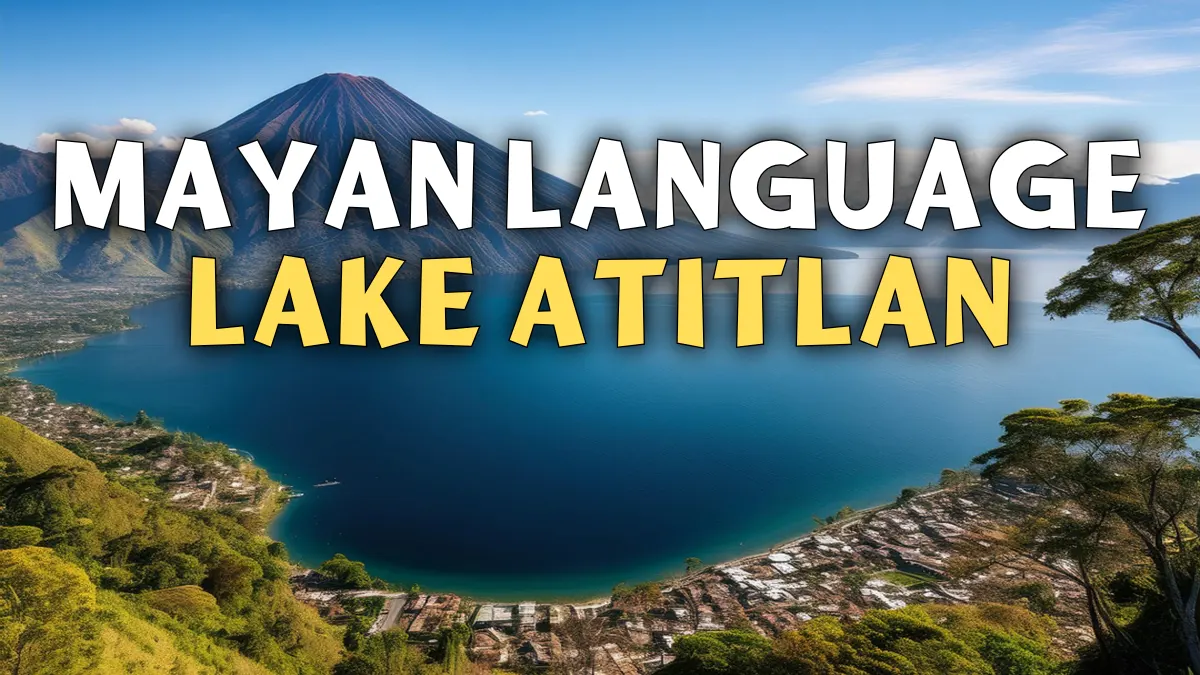Lake Atitlán, located in the Sololá department of Guatemala, is a natural treasure surrounded by mountains and volcanoes. The region around the lake is home to several towns, each with its own rich cultural and linguistic heritage. This lake, considered one of the most beautiful in the world, is also a key area for the preservation of Mayan languages, especially Kaqchikel, K’iche’, and Tz’utujil.
Towns around Lake Atitlán
The most notable towns in the area are Panajachel, San Pablo La Laguna, San Pedro La Laguna, Santiago Atitlán, and San Lucas Tolimán. Each of these places not only offers breathtaking landscapes but is also home to Mayan communities that have kept their traditions and languages alive for centuries.
Panajachel and Its Linguistic Diversity
In Panajachel, known as the “gateway” to Lake Atitlán, most inhabitants are speakers of Kaqchikel, though it is also common to hear K’iche’ and Tz’utujil. This town is a cultural melting pot where both the Spanish language and several Mayan languages coexist, reflecting the ethnic diversity of the region.
Language Distribution in Other Towns
- Santiago Atitlán, San Pedro La Laguna, and San Juan La Laguna are known for their strong predominance of the Tz’utujil language. In fact, Santiago Atitlán is one of the most important centers for the preservation of this language, where the majority of the population uses Tz’utujil in their daily lives.
- In towns like San Lucas Tolimán and Santa Catarina Palopó, Kaqchikel is the main language, though there are also speakers of K’iche’ due to migration and cultural blending with nearby communities.
- To a lesser extent, some towns around the lake have a mix of K’iche’ speakers, although its use is less predominant compared to Tz’utujil and Kaqchikel.
The Importance of Preserving Mayan Languages
Lake Atitlán is not just a popular tourist destination; it is also a stronghold of contemporary Mayan culture. The Kaqchikel, K’iche’, and Tz’utujil languages are not just means of communication; they are vehicles for transmitting history, ancestral knowledge, and the worldview of the communities that inhabit this region.
Today, there are efforts by local and international organizations to promote the teaching and preservation of these languages in schools to ensure their survival for future generations. Additionally, the use of these languages in everyday life, traditional festivals, and ceremonies reinforces the cultural identity of the towns surrounding Lake Atitlán.
Conclusion
Lake Atitlán is much more than a tourist destination; it is a meeting point of cultures and Mayan languages that have withstood the test of time. Visiting these towns not only allows one to experience the natural beauty but also the rich linguistic heritage that defines this region as a living symbol of the Mayan legacy in Guatemala.
